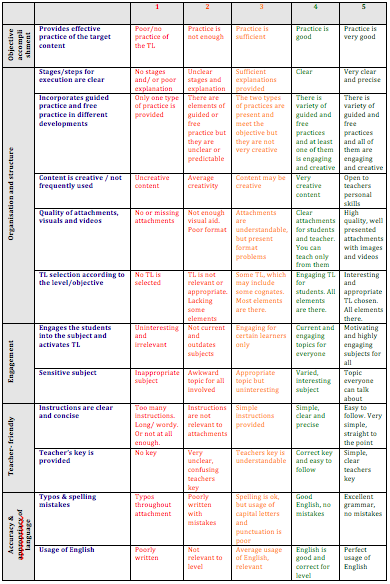What are the best
approaches and strategies to teaching ESL to young learners and teenagers? The question is relevant enough and worth dedicating a lot of specific attention to. More than a list of tips, we teachers need to understand what is our youngest target audience is like: what defines young learners, pre-adolescents and teenagers, what motivates them, what activities work and how to address possible classroom problems. Altogether, we set some criteria for research and challenged ourselves by proposing several creative activities to illustrate our conclusions.
Our presumption is that a lack of attention or discipline problems are often a result of uninteresting class practice, poor classroom dynamics failing to connect with our learners. The teacher is not to be blamed; the problem is often related to inadequate material. The teacher can usually see the utility in doing some grammar practice, but not so much the student. Students are more content driven, rather than utility driven. The usefulness of our classes will be a achieved only if the learner enjoys being in class.
The chart below features some of our conclusions.
But there's more. There's the practical side of it, which in our system is a concrete activity. In this case we asked several teachers to propose creative activities based on a story, a video and a role play or drama.
The result is still to be tested. We can't wait to see the reactions of our students!
Compare and contrast: |
Pre-adolescents7 to 12 years old |
Teenagers13 to 17 years old |
Adults>18 years old |
Differences and similarities in learning |
- Children learn easier: don’t need to be motivated as their attention is fuelled by innate curiosity
|
- Some students will be interested, some will be apathetic
- Motivation can be a result of bringing learners’ interests in the class activities
|
- Adults have more varying levels and difficulties
- Adults tend to be more analytical which can help them retain content by associating ideas
|
Differences and similarities in needs |
- Pre-adolescents are not conscious yet about grammar rules and structure, so there is no need to overcorrect accuracy
- Accuracy will come as a result of sufficient exposure and interaction in English
|
- Create a comfortable classroom
- Be empathetic
- Challenge them but don’t put them on the spot
|
- Use age appropriate activities
- Plan your lessons around their goals, often from the professional field
|
Differences and similarities in attention |
- Attention spans are very short, so keep momentum going.
- Movement and activity is a key factor
|
- Create a strong rapport
- Ask how their day is
- Talk to them after class
|
- Provide detailed and encouraging feedback. They may be easily discouraged if they feel they are struggling
|
Using “quiet signals”. Provide examples of practices |
- Shouting is never effective
- Clap 3 times, get them to clap back
|
- Use a raised hand and / or start counting
|
- With adults body expression and face expression above all is usually used to complement verbal expression.
|




